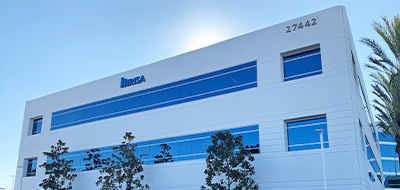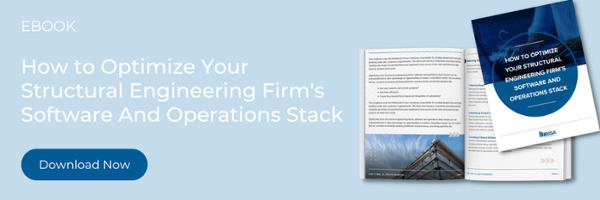Are you looking to switch your structural engineering software? With so many options, knowing which one is right for your team or project can take a lot of work. These tips will help you navigate the process of switching software, from evaluating your needs and researching different types of engineering software to completing the transition and staying current with updates.
1. Your Needs
Every project and firm will have different requirements when it comes to software selection. Before deciding which software package is best for you, it’s best to have a full assessment of what you have and what you need.
You also need to consider software features from an engineering standpoint – such as design capabilities, BIM reporting, and 3D modeling functions – and only select a software package that offers those features.
2. Timing
They say timing is everything. When planning a switch, consider if there are any current projects or commitments that need to be completed first. If so, factor in how long these will take and how much time you'll need to become accustomed to your new software before transitioning completely.
You also want to make sure that you're not paying for multiple software programs at once. If you have an existing subscription that hasn't yet expired, factor in the remaining term and when it will be best to switch over so as not to waste money.
Finally, don't underestimate the amount of time required for evaluation when deciding on a new structural engineering software program. This includes meeting with vendors, reading reviews and testimonials, exploring trial versions, attending webinars and conferences – anything that can help you decide if the software is right for your business's needs. This can take several weeks or even months so it's important to plan ahead and give yourself enough time for this process before making any kind of commitment.
3. Learning Curve
Although the learning curve may be less steep when you are considering software some of your engineers are already familiar with, there will be aspects of a new product that need to be clarified and require training before users can fully use its features and capabilities. Try out a free trial version of the software or watch online tutorials before committing to a purchase to get a good sense of the user experience. You can also arrange a meeting with the software company to further discuss its features and how it may meet your engineering needs. A 1:1 meeting is a great way to get an accurate understanding of what the software can do for you and offer a chance for more questions about specific features you would like to know more about.
You should also remember that switching engineering software usually requires relearning familiar tasks, including finding new commands for features that users have become accustomed to using on their old programs. Be sure to provide time and resources for your engineers to learn before they need it!
4. Data Transfer and Conversion
Data transfer involves moving data from one system to another to migrate project information and update workflows. Conversion curves ensure that all elements are accurately converted from their original format into the new target format.
With BIM/CAD (or drafting/detailing) software, you can quickly import and export 3D models into multiple formats such as IFC or DWG, making it easier to share designs with other users or use them across multiple platforms.
To facilitate the transition, many structural engineering programs now offer a variety of tools for converting data from one format to another. These include wizards for importing or exporting models into various formats as well as specific "import" and "export" functions for each file type.
5. Resources
When transitioning from one engineering software to another, consider the resources that may be necessary for a successful transition, including the technology and hardware needed for the new platform and the time and personnel that will be required.
Three key steps to success are:
-
First, identify any limitations of your current system. Are these issues solved by switching platforms, or if they are inherent limitations with no other solution available?
-
Next, you need to evaluate the technology and hardware requirements needed to run the new platform. Is your current infrastructure capable of running the new system? Do you need cloud computing, dedicated servers, or additional memory and storage? Are there any special network requirements or cloud licensing needed?
-
Finally, consider the personnel resources necessary for a successful transition. This may include training for staff on how to use the system and IT support.
6. Vendor Stability and Track Record
When selecting a structural engineering software vendor, consider the vendor's location – are they local or based internationally? This can be beneficial both for customer service in case of any issues that arise, as well as providing assurance that they will continue to provide support into the future.
It's also important to look at how long the vendor has been in business, and their timeline of product releases. Have they been releasing new versions regularly and on time? Are these updates accompanied by reliable customer service?
Another factor to consider is the company’s reputation within the industry. Are they well-known and respected, or a lesser-known company? It's also wise to check whether the software is backed by any IT certifications, such as ISO certification or other standards that prove their reliability and trustworthiness.
Do your research on their history and reputation. Start by looking at customer reviews from current users to get an idea of how reliable the vendor or software is and whether people are happy with its performance over time. A good place to find software reviews are on Structure Magazine, Eng-Tips, Software Advice, Capterra, G2, or Gartner.
7. Customer Support and Future Updates
When deciding which software to run with, vendor customer support should be evaluated. A good support team is essential for helping you get the most out of your engineering software and addressing any issues that may arise during implementation and beyond.
In addition to customer service, future updates are also important when switching engineering software. Many software programs offer regular updates that add new features or improve existing ones. You should evaluate providers on the type of long-term support users experience.
Think Before You Switch!
As you can see, there are many things to consider before making a decision. By taking the time to do your research and ask questions, you’ll be sure to find the best software for your needs. At RISA, that’s exactly why we focus on “partnering” with engineers rather than just being another “vendor”. So, if you are in the market for an integrated structural engineering suite that provides best-in-class technical support, reach out today!





